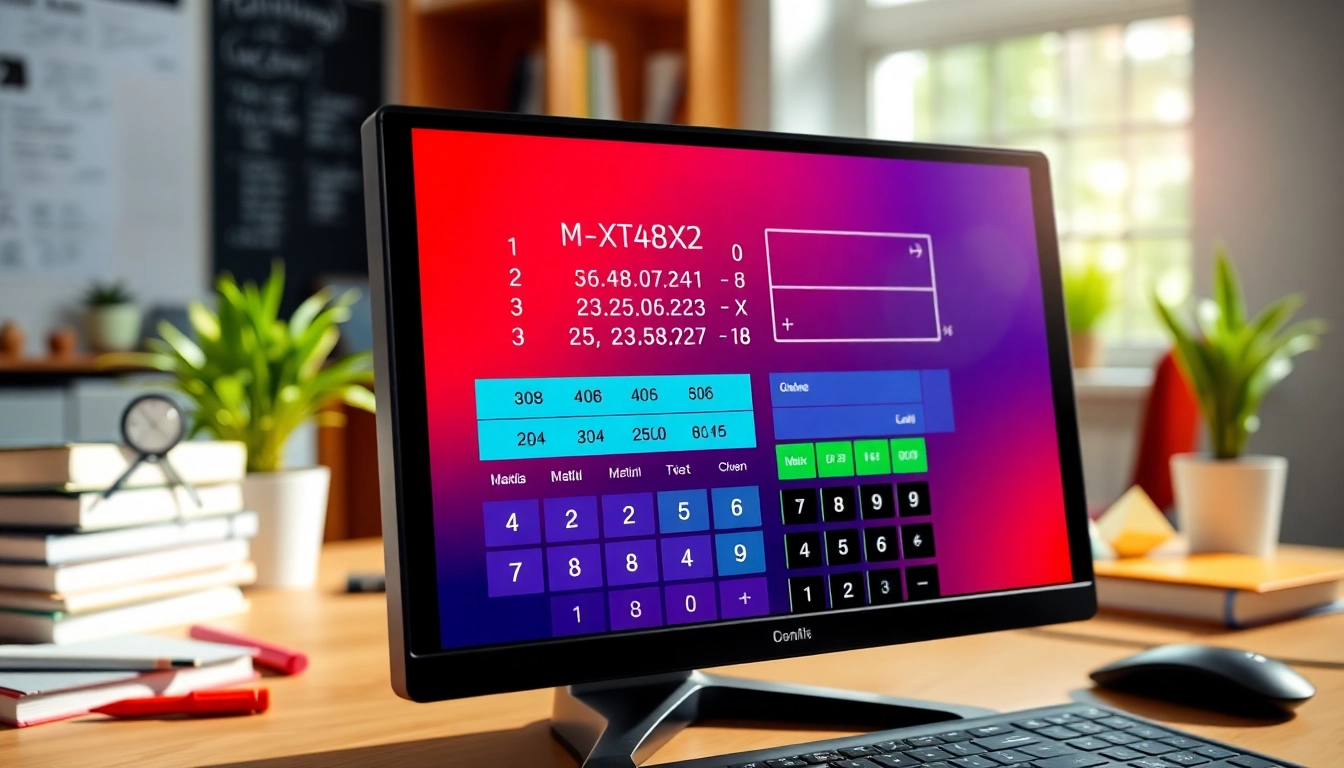
Understanding the Basics of Matrix Calculators
Matrix calculations are an integral part of various fields such as mathematics, physics, computer science, and engineering. They help solve complex problems, streamline processes, and make data analysis more efficient. Whether you need to solve linear equations or perform transformations, a Matrix Calculator can be a powerful tool at your disposal. This article will provide a comprehensive guide to understanding matrix calculators, exploring their features, benefits, and how to use them effectively.
What is a Matrix?
A matrix is a rectangular arrangement of numbers, symbols, or expressions, organized in rows and columns. Each element in a matrix can be identified by its position within that structure, typically denoted as i,j, where i represents the row number and j represents the column number. Matrices are crucial in linear algebra, where they are used to represent and solve linear equations, perform transformations in geometry, and facilitate numerous applications in statistics and data analysis.
Functions of a Matrix Calculator
Matrix calculators come equipped with various functionalities that assist users in performing operations on matrices effectively. Some of the key functions include:
- Matrix Addition and Subtraction: These calculators allow you to easily sum or subtract matrices of the same dimensions.
- Matrix Multiplication: This feature is particularly vital, as it allows for multiplication of matrices, which follows specific rules and can be complex to perform manually.
- Finding the Determinant: A matrix’s determinant provides important information about the matrix, including solutions of linear equations and properties of the transformations represented by the matrix.
- Calculating the Inverse: The inverse of a matrix is used to solve systems of equations and perform other operations. The calculator simplifies this otherwise complex calculation.
- Row Echelon Form: It helps to convert matrices into row echelon form, which is essential for solving linear equations and analyzing matrix rank.
Common Use Cases for Matrix Calculators
Matrix calculators are utilized across various domains, including but not limited to:
- Engineering: Used for structural analysis, circuits, and modeling.
- Computer Science: In applications like graphics transformations, machine learning algorithms, and data processing.
- Economics: For solving systems of equations in resource allocation and optimization problems.
- Statistics: In regression analysis and other statistical modeling techniques.
Key Features of a Matrix Calculator
Performing Basic Operations
At its core, a matrix calculator enables users to perform fundamental operations with ease and speed. Basic functionalities such as addition, subtraction, and multiplication help users handle numerical data conveniently. For instance, consider two matrices, A and B:
A = | 1 2 |
| 3 4 |
B = | 5 6 |
| 7 8 |
The addition of A and B will yield:
C = A + B = | (1+5) (2+6) | = | 6 8 |
| (3+7) (4+8) | | 10 12 |
Similarly, matrix multiplication requires adherence to specific rules, ensuring the number of columns in the first matrix matches the number of rows in the second.
Advanced Functions: Determinants and Inverses
Beyond basic operations, matrix calculators provide advanced functionality to compute determinants and inverses, essential for applications in linear algebra. The determinant, a scalar value derived from a square matrix, encapsulates various properties of the matrix, including invertibility. For instance, a matrix is invertible if and only if its determinant is non-zero.
The process of finding the inverse of a matrix, especially large matrices, can be tedious, involving methods like Gaussian elimination or adjugate calculation. A matrix calculator streamlines this process by automating calculations, ensuring accuracy and saving time.
Step-by-Step Solutions and Tutorials
Many advanced matrix calculators offer step-by-step solutions, breaking down the calculations to enhance the learning experience. This feature is especially beneficial for students and educators, as it allows users to understand the underlying principles of each operation, bridging the gap between theoretical knowledge and practical application. Tutorials often accompany these platforms, presenting examples and guided procedures for various matrix operations.
How to Use a Matrix Calculator Effectively
Inputting Data Correctly
To maximize the efficiency of a matrix calculator, accurate data entry is crucial. Users must ensure matrices are entered in the correct format, adhering to the required dimensions. For example, entering a 2×2 matrix incorrectly as a 1×4 matrix could lead to errors or miscalculations. Most calculators provide clear guidelines for input formatting, including examples and cheat sheets for quick reference.
Interpreting the Output
Understanding the output is key to applying the results effectively. Most matrix calculators display results in clear formats, but it’s important to grasp what these outputs signify. For instance, the result of a matrix multiplication operation includes an entirely new matrix, while a determinant operation yields a single numeric value. Users should learn to distinguish between different types of outputs to utilize them effectively in further calculations or applications.
Troubleshooting Common Issues
Users may encounter issues while using matrix calculators, such as incorrect results due to input errors or misunderstanding calculator functions. It’s important to review the input carefully and confirm the operations pursued align with the intended calculations. If something seems off, there are often troubleshooting sections or customer support for online calculators that can assist with common problems.
Benefits of Online Matrix Calculators
Accessibility and Ease of Use
Online matrix calculators offer unmatched accessibility, enabling users to perform complex calculations from anywhere with internet access. Their user-friendly interfaces typically eliminate the learning curve associated with mathematical computation software, making them approachable for both beginners and professionals alike. Users can quickly perform calculations without needing to install additional software, enhancing their convenience.
Comparative Advantages Over Traditional Methods
Compared to traditional manual calculations, online matrix calculators eliminate the tediousness and potential for error inherent in manual methods. They allow for rapid execution of multiple calculations, supporting complex operations that may not be feasible to perform by hand. For researchers or students needing to complete numerous calculations quickly, this can significantly enhance productivity and efficiency.
Enhancing Learning with Technology
Integrating technology into educational settings enriches the learning experience. Online calculators provide interactive learning tools that promote active engagement with mathematical concepts. Educators can use these calculators to demonstrate practical applications in classrooms, helping students see the relevance of matrix operations in real-world problems.
Conclusion: The Future of Matrix Calculations
Emerging Trends in Educational Technology
The landscape of education is evolving, with technology increasingly influencing how subjects are taught and learned. Matrix calculators are part of this shift, affording users a modern approach to tackle mathematical challenges. With ongoing advancements in AI and machine learning, we can expect even smarter calculators that provide deeper insights, personalized tutorials, and adaptive learning pathways tailored to individual user needs.
Encouraging Analytical Thinking
The utilization of matrix calculators fosters analytical thinking, as users develop problem-solving skills through complex calculations and operations. By interacting with various functionalities, students enhance their analytical abilities, preparing them for higher education and careers in STEM fields. Understanding matrices as foundational tools equips learners for both academic and practical applications.
Integrating Matrix Calculators into Study Routines
Incorporating matrix calculators into study routines can enhance comprehension and performance. Students preparing for exams can practice operations across various use cases, assessing their understanding of matrix applications in different contexts. Additionally, leveraging these tools for homework and project assignments can result in more accurate submissions and deeper insights.






